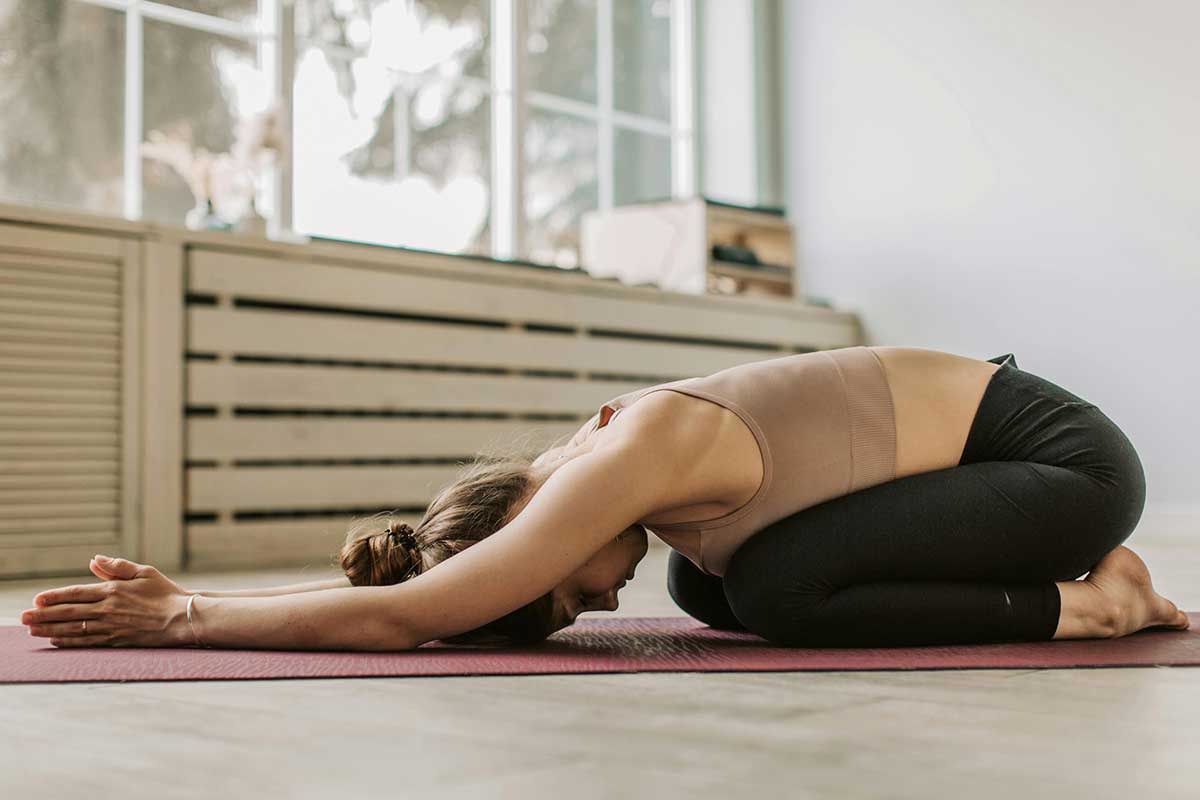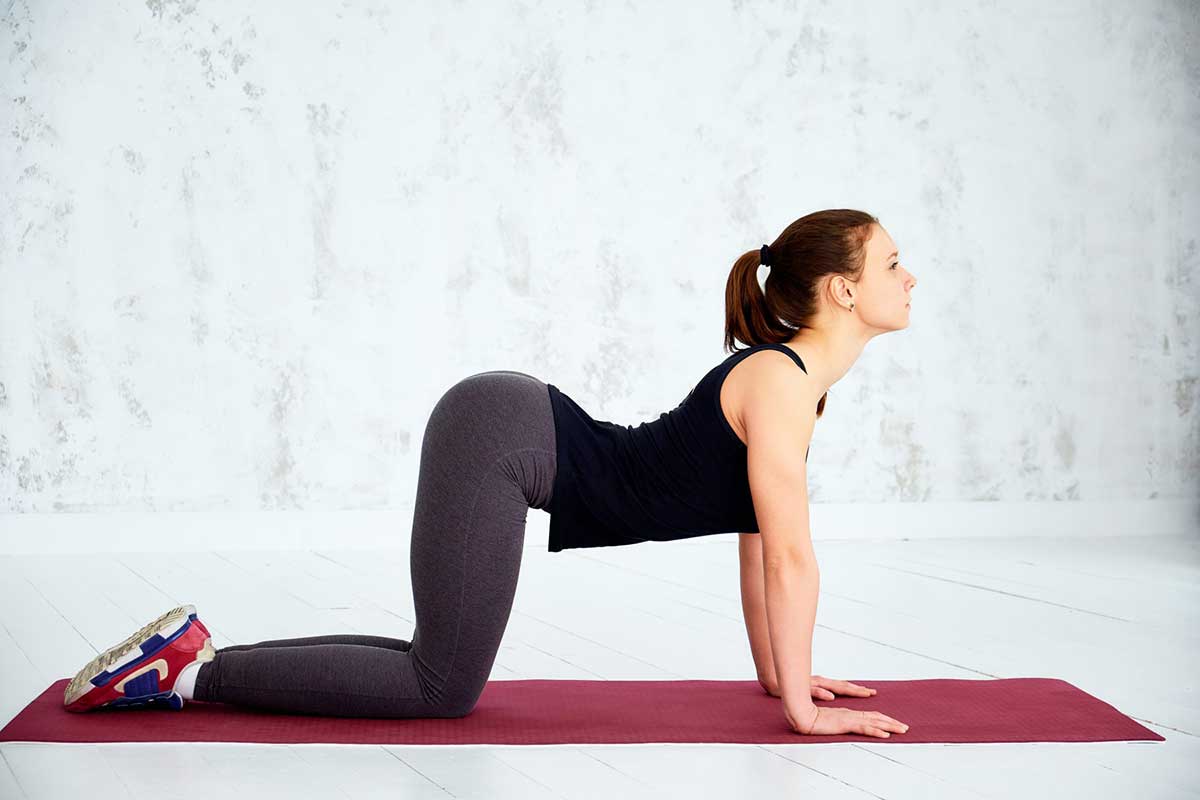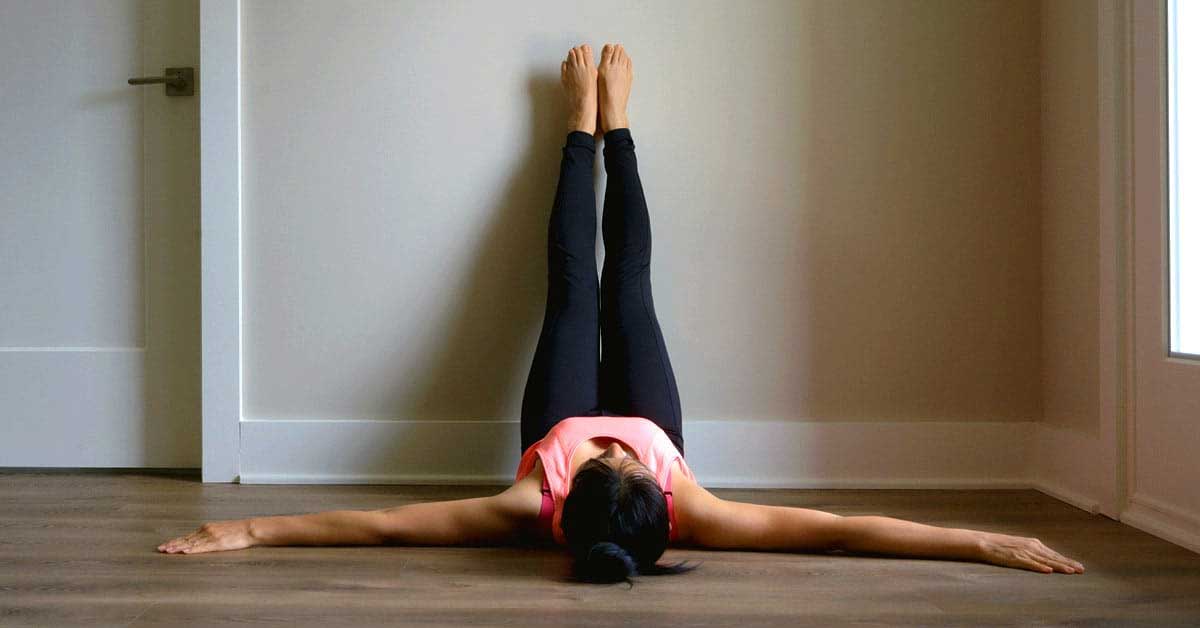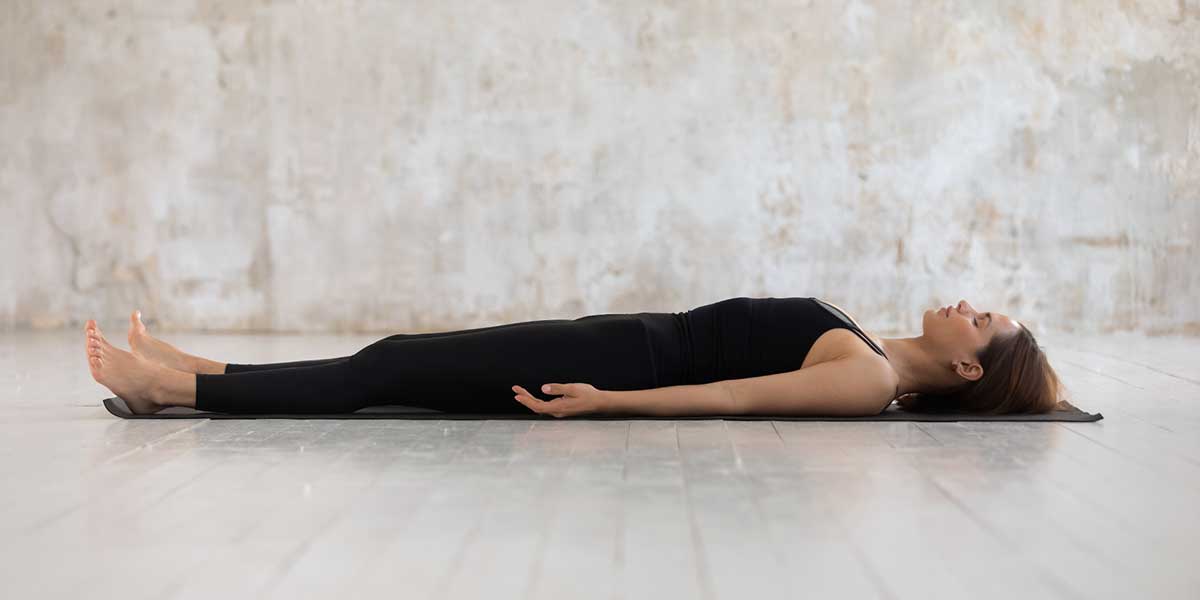Before you begin, take 30 seconds to understand your current state with a quick anxiety assesment. This helps you customize the routine for maximum relief:
Rate your current anxiety level: 1 (calm) to 10 (overwhelming)
Where do you feel tension most? Shoulders, chest, stomach, jaw, or all over
How much time can you dedicate? 10 minutes (full routine) or 5 minutes (express version)
Your yoga experience: Complete beginner, some experience, or regular practitioner
Best practice time for you: Morning energy boost, midday reset, or evening wind-down
Keep these answers in mind as you read. We’ll reference them throughout the routine.
The Urgent Need for Fast Relief
The breathing app sits unused on your phone because focusing on stillness feels impossible when anxiety grips you tight. The truth is that sometimes your anxious mind needs your body’s help to find calm.
This isn’t about perfect poses or spiritual enlightenment. It’s about a scientifically-backed, 10-minute routine that works when you need relief right now. Four simple poses that interrupt anxiety’s physical grip and restore your sense of control.
You don’t need years of practice. You don’t need expensive equipment. You just need 10 minutes and the willingness to move your body toward calm.
The Science is Clear: Yoga for Anxiety is No Myth
How Yoga Rewires Your Brain for Calm
When you practice yoga, something powerful happens in your nervous system. Your vagus nerve – the main highway between your brain and body – gets activated. This triggers your parasympathetic nervous system, your body’s natural “rest and digest” mode.
Here’s exactly what happens in your body:
Vagus Nerve Stimulation: Forward folds and gentle inversions directly activate this calming nerve. The pressure on your forehead in Child’s Pose stimulates nerve endings that send “all clear” signals to your brain.
Cortisol Reduction: Your stress hormone levels begin dropping within 3-5 minutes of starting practice. Peak reduction happens around 15-20 minutes post-practice.
GABA Production: This natural anxiety-fighting neurotransmitter increases during movement-based practices. Effects last 2-4 hours after your session ends.
Heart Rate Variability: Yoga improves this key anxiety marker by teaching your heart to respond more flexibly to stress signals.
Unlike pure mental techniques, yoga gives your racing thoughts something to focus on: breath, movement, and physical sensation. This triple combination creates what researchers call “embodied mindfulness” – a state where your mind and body work together to break free from anxiety’s loop.
Even Short Sessions Deliver Powerful Results
The research is solid. A breakthrough study at NYU Langone Health found that Kundalini yoga significantly reduced symptoms in people with Generalized Anxiety Disorder. After 12 weeks, 54% of participants saw meaningful improvement in their anxiety levels.
Harvard Medical School researchers confirmed that yoga activates the relaxation response faster than traditional meditation for many people. Their studies show measurable changes in brain wave patterns within the first session.
But here’s what’s really exciting: You don’t need 12 weeks to feel benefits. A systematic review of multiple studies confirmed that even short-term yoga practices create significant reductions in anxiety symptoms. We’re talking about relief you can feel in a single session.
Additional research shows workplace yoga breaks as short as 10 minutes reduce anxiety scores by 25% and improve focus for up to 3 hours afterward.
Physiological Benefits Timeline
| Time Frame | What Happens in Your Body | Scientific Basis |
|---|---|---|
| 0-2 minutes | Heart rate begins to slow, breathing deepens | Parasympathetic nervous system activation |
| 3-5 minutes | Cortisol levels start dropping, muscle tension releases | HPA axis regulation begins |
| 5-8 minutes | GABA production increases, mental chatter quiets | Neurotransmitter response kicks in |
| Post-practice | Calm state persists for 2-4 hours | Complete nervous system reset |
Why Physical Movement Outperforms Pure Meditation (For Some)
Meditation apps help millions of people, but when anxiety lives in your body as tight shoulders, shallow breathing, and restless energy, purely mental approaches can feel like fighting fire with a water gun.
Yoga meets anxiety where it lives: in your physical form. It releases the muscular tension that feeds anxious thoughts. It deepens the breath that anxiety makes shallow. It grounds you in your body when your mind wants to float away on worry.
Your 10-minute Anxiety Reset: A 4-Pose Power Flow
The Core Principle: Grounding, Opening, and Releasing Tension
This sequence follows a simple but powerful arc. First, we ground and surrender. Then we gently move and release. Next, we deeply rest and restore. Finally, we integrate and emerge renewed.
Each pose targets anxiety’s favorite hiding spots: tight shoulders, shallow breath, racing thoughts, and that feeling of being “up in your head.”
Quick Reference Guide
| Pose | Duration | Key Benefits | Breath Focus | Common Modifications |
|---|---|---|---|---|
| Child’s Pose | 2 min | Nervous system calm, grounding | Long exhales | Pillow under forehead, cushion between legs |
| Cat-Cow Flow | 2 min | Spinal release, improved circulation | Sync with movement | Seated version, hands on thighs |
| Legs-Up-Wall | 3 min | Blood flow improvement, heart rate reduction | Natural deepening | Use chair, bolster under back |
| Corpse Pose | 2 min | Integration, complete muscle release | Effortless breathing | Eye pillow, blanket for warmth |
Environment Setup Checklist
Before you begin, take 1 minute to create your calm space:
Setting the Stage (1 Minute Prep)
Find your quiet space. Your bedroom floor works fine. Dim the lights if you can.
Notice how you feel right now. Anxious? Overwhelmed? Tired? Don’t judge it – just acknowledge it.
Take three grounding breaths: Inhale for 4 counts, hold for 4, exhale for 6. Feel your feet on the ground. You’re here. You’re safe. You’re about to help yourself feel better.
Pose 1: Child’s Pose (Balasana) (2 Minutes)
Why it works: This pose is like a warm hug for your nervous system. When you fold forward and rest your forehead down, you’re stimulating pressure points that naturally calm your mind. The gentle compression on your abdomen soothes your digestive system, where anxiety often lives as “butterflies” or nausea.

How to do it: Kneel on your mat or carpet. Let your knees open wide – about as wide as your hips. Sink your hips back toward your heels. Fold forward, resting your torso between your thighs. Let your forehead touch the ground. Stretch your arms forward or rest them by your sides – whatever feels better.
Modifications:
- Can’t get your forehead down? Rest it on a pillow or stack of books
- Tight hips? Place a cushion between your calves and thighs
- Knee issues? Sit in a chair and fold forward over a table
- Pregnancy? Keep knees wide, support belly with a bolster
Focus: Make your exhales longer than your inhales. With each breath out, imagine releasing one layer of tension. Don’t rush. Let your body get heavy.
Pose 2: Cat-Cow Flow (Marjaryasana-Bitilasana) (2 Minutes)
Why it works: Anxiety loves to live in your upper back and shoulders. This flowing movement releases that trapped tension while coordinating your breath with movement. The gentle spinal articulation improves circulation and massages your internal organs.

How to do it: Come to hands and knees. Place your hands directly under your shoulders, knees under your hips.
On your inhale, drop your belly down, lift your chest and tailbone up. This is Cow pose – let yourself feel open and expansive.
On your exhale, round your spine toward the ceiling like an angry cat. Tuck your chin toward your chest. This is Cat pose – let yourself feel protective and contained.
Flow slowly between these two positions. There’s no rush.
Modifications:
- Wrist problems? Do this seated, with hands on your thighs
- Back injury? Make smaller movements, focus on breath
- Knee sensitivity? Place a blanket or cushion under your knees
- Limited mobility? Do this movement in a chair
Focus: Match your movement to your breath. Inhale into Cow, exhale into Cat. If your mind wanders to your worries, bring it back to the rhythm of breath and movement. Let your spine move like a wave.
Pose 3: Legs-Up-The-Wall Pose (Viparita Karani) (3 Minutes)
Why it works: This is where the magic happens. By gently inverting your legs, you’re sending a clear message to your nervous system: it’s time to rest. Blood flow improves, your heart rate slows, and your fight-or-flight response gets the memo that you’re safe.

How to do it: Sit sideways next to a wall. Lie down and swing your legs up the wall. Scoot closer or farther away until it feels comfortable – you don’t need to be pressed against the wall. Let your arms rest by your sides, palms facing up.
Modifications:
- No wall available? Lie on your back and rest your calves on a chair or couch
- Lower back discomfort? Place a folded blanket under your hips
- Tight hamstrings? Move farther from the wall, or bend your knees slightly
- Circulation issues? Come out of the pose if you feel tingling
Focus: This is your time to do absolutely nothing. Feel gravity holding you. Notice how your breath naturally deepens. If anxious thoughts arise, don’t fight them – just notice them and return your attention to the sensation of being supported.
Pose 4: Corpse Pose (Savasana) (2 Minutes)
Why it works: Don’t skip this part – it’s where your body locks in all the benefits you just created. Savasana allows your nervous system to fully register the shift from anxious to calm. It’s like saving a document on your computer – without it, you lose the work you just did.

How to do it: Lie flat on your back. Let your legs fall open naturally, about hip-width apart. Rest your arms by your sides, palms facing up. Close your eyes. Do nothing.
Modifications:
- Back discomfort? Bend your knees, feet flat on floor
- Feel exposed? Cover yourself with a light blanket
- Mind too active? Try counting breaths from 10 down to 1
- Cold room? Wear socks or place a blanket over yourself
Focus: Let your breath return to its natural rhythm. Scan through your body from your toes to the top of your head. Notice any areas that still feel tense and consciously soften them. You don’t need to fix anything or go anywhere. Just rest.
Timer Sound Design:
- All chimes use pure sine waves for the most soothing, meditation-friendly tones
- Volume levels are kept low and gentle (much softer than typical alerts)
- Frequencies chosen specifically for relaxation (C major chord tones)
- Breathing reminders are the most subtle – just a gentle nudge to stay present
- Each sound fades in and out smoothly to avoid jarring interruptions
The sounds will enhance your practice by:
- Marking transitions smoothly so you don’t have to watch the timer
- Encouraging mindful breathing with gentle periodic reminders
- Creating ritual with start/end chimes that signal sacred practice time
- Supporting focus by giving audio cues instead of visual distractions
🧘♀️ 10-Minute Anxiety Relief Timer
Prepare Your Space
Find your quiet space and take three grounding breaths
Today's Anxiety Relief Sequence:
- Child's Pose - 2 minutes
- Cat-Cow Flow - 2 minutes
- Legs-Up-The-Wall - 3 minutes
- Corpse Pose - 2 minutes
Customize Your Practice: Anxiety Symptoms & Targeted Approaches
| Physical Symptom | Recommended Focus | Why It Helps | Modification |
|---|---|---|---|
| Racing heart | Hold Legs-Up-Wall for 4-5 minutes | Activates parasympathetic response, slows heart rate | Use bolster under back for deeper relaxation |
| Tight shoulders/neck | Extend Cat-Cow to 3 minutes | Releases upper body tension, improves circulation | Add gentle neck rolls |
| Shallow breathing | Focus on Child’s Pose | Encourages diaphragmatic breathing, calms nervous system | Place hands on ribs to feel breath expand |
| Restless energy | Do full sequence twice | Channels energy productively, provides physical outlet | Move slightly faster between poses |
| Mental fog/overwhelm | Emphasize Corpse Pose (3-4 minutes) | Clears cognitive overload, promotes mental clarity | Use guided body scan |
| Digestive upset | Focus on gentle Cat-Cow | Massages internal organs, aids digestion | Move extra slowly and mindfully |
Essential Props & Equipment Guide
| Essential (Must Have) | Nice to Have | DIY Alternatives | Where to Find |
|---|---|---|---|
| Mat, towel, or carpeted space | Yoga blocks | Books or firm pillows | Any room in your home |
| Wall space or sturdy chair | Bolster or pillow | Couch cushions | Living room, bedroom |
| 10 uninterrupted minutes | Essential oils diffuser | Favorite scented candle | Create boundaries with family |
| Timer with gentle chimes | Phone timer (airplane mode) | Free apps: Insight Timer, Calm | |
| Eye pillow | Small towel over eyes | Any dark, soft fabric | |
| Light blanket | Any covering for warmth | Bedroom linens work fine |
Breathing Techniques for Enhanced Calm
Box Breathing (Great for Racing Thoughts)
- Inhale for 4 counts
- Hold for 4 counts
- Exhale for 4 counts
- Hold empty for 4 counts
- Repeat 4-8 cycles
4-7-8 Technique (Perfect for Panic Symptoms)
- Inhale through nose for 4 counts
- Hold breath for 7 counts
- Exhale through mouth for 8 counts
- Repeat 3-4 cycles maximum
Extended Exhale (Best During Poses)
- Inhale naturally for 3-4 counts
- Exhale slowly for 6-8 counts
- Continue throughout your practice
Troubleshooting Common Challenges
“I can’t stop thinking during the poses”
This is completely normal. Your anxious mind is used to racing. Don’t try to stop thoughts – just notice them and return attention to your breath or body sensations. Each time you notice and return, you’re building your calm muscle.
“I feel more anxious when I slow down”
Some people feel worse initially when they stop moving. This is your nervous system releasing stored tension. Stay with it, breathe deeply, and remind yourself this discomfort is temporary and healing.
“I don’t have enough space”
You need about 6 feet of floor space. A bedroom, living room corner, or even office space works. For Legs-Up-Wall, any wall will do – even next to your bed.
“My family/roommates interrupt me”
Set boundaries. Tell them you need 10 minutes of quiet time for your health. Put a sign on your door, or practice early in the morning or late at night when others are sleeping.
“I feel silly doing yoga”
You’re taking care of your mental health. That’s not silly – it’s smart. Start with just Child’s Pose if other poses feel awkward. As you feel the benefits, self-consciousness fades.
“I fall asleep during Corpse Pose”
That’s fine! It means your nervous system is finally relaxing. If you need to stay awake, keep your arms slightly lifted off the ground or practice with eyes slightly open.
Situation-Specific Adaptations
At the Office (5-Minute Express Version)
- Seated Cat-Cow (2 minutes): Hands on thighs, arch and round your back
- Desk forward fold (2 minutes): Fold over your legs in your chair
- Seated breathing (1 minute): Close your eyes, focus on long exhales
Travel Anxiety (Airport/Hotel Room)
- Standing forward fold: Bend over your legs while standing
- Wall sits: Back against wall, slide down slightly and breathe
- Bathroom breaks: Do breathing exercises in private stalls
Pre-Social Event Routine
- Extended Child’s Pose (3 minutes): Extra grounding before facing people
- Confidence breathing: Inhale “I am calm,” exhale “I am ready”
- Quick body scan: Release any areas of tension
Bedtime Sequence for Better Sleep
- Gentle Cat-Cow (1 minute): Release the day’s tension
- Legs-Up-Wall (5 minutes): Let gravity do the work
- Extended Corpse Pose (4 minutes): Prepare for sleep
Panic Attack Recovery
- Child’s Pose: Ground yourself immediately after symptoms pass
- Extended exhale breathing: 4 counts in, 8 counts out
- Gentle movement: Slow Cat-Cow to reconnect with your body
Progressive Practice Development
Week 1-2: Foundation Building
- Master the basic 4-pose sequence
- Focus on proper alignment and breathing
- Practice 3-4 times per week
- Goal: Familiarity and comfort with each pose
Week 3-4: Deepen the Practice
- Add specific breathing techniques to each pose
- Hold poses for longer if comfortable
- Practice 4-5 times per week
- Goal: Notice faster anxiety relief
Week 5-6: Expand the Benefits
- Try the 15-minute extended version
- Add situation-specific adaptations
- Practice daily if possible
- Goal: Use yoga proactively, not just reactively
Week 7-8: Integration Mastery
- Experiment with different variations
- Combine with other wellness practices
- Share the routine with friends or family
- Goal: Make this a lifelong anxiety management tool
Complementary Practices to Boost Results
| Practice | Time Needed | Best Combined With | Additional Benefits |
|---|---|---|---|
| Gratitude journaling | 5 minutes | After Corpse Pose | Shifts mental focus to positive |
| Essential oil aromatherapy | Ongoing | During any pose | Lavender and bergamot enhance relaxation |
| Nature sounds | 10 minutes | Background during practice | Improves focus and calm |
| Gentle walking | 10 minutes | Before or after routine | Integrates benefits, aids circulation |
| Warm bath | 15 minutes | After evening practice | Extends relaxation, improves sleep |
| Herbal tea | 5 minutes | Post-practice ritual | Chamomile or passionflower support calm |
Seasonal Adaptations for Year-Round Practice
Spring: Renewal and Fresh Energy
- Add gentle backbends after Cat-Cow for heart opening
- Practice near open windows for fresh air benefits
- Focus on “new beginning” intentions during Corpse Pose
Summer: Cooling and Calming
- Incorporate cooling breath (inhale through pursed lips)
- Practice in cooler morning or evening hours
- Add longer holds in restorative poses
Fall: Grounding and Transition
- Emphasize Child’s Pose for extra grounding
- Add gratitude reflection during Corpse Pose
- Practice consistency to navigate seasonal changes
Winter: Warmth and Comfort
- Use blankets during practice for warmth
- Add gentle movement before poses to warm up
- Focus on self-compassion if seasonal depression affects you
When to Seek Professional Help
Yoga is powerful medicine, but it’s not the only medicine. Consider professional support if you experience:
- Panic attacks that interfere with daily life
- Persistent anxiety lasting most days for several weeks
- Sleep disruption from anxious thoughts
- Avoidance behaviors that limit your activities
- Physical symptoms like chest pain or dizziness
- Thoughts of self-harm or feeling hopeless
Types of Professional Help:
- Primary care doctor: Rule out medical causes, discuss medication
- Licensed therapist: Cognitive Behavioral Therapy (CBT) works exceptionally well for anxiety
- Certified yoga therapist: Specialized yoga approaches for mental health
- Psychiatrist: Medication management if needed
This routine works beautifully alongside therapy, medication, or other treatments. Think of it as part of your wellness team, not a replacement for professional care.
Building Your Complete Anxiety Toolkit
Daily Maintenance (10 minutes)
- Morning: 4-pose routine to set calm tone
- Midday: 3-minute breathing break during work
- Evening: Extended Corpse Pose for better sleep
Weekly Expansion (Add 1-2 of these)
- Longer yoga class (30-60 minutes) once per week
- Nature walks for grounding and perspective
- Social connections with supportive friends or family
- Creative activities that engage your hands and mind
Monthly Check-ins (15 minutes)
- Review your practice tracker for patterns and progress
- Adjust routines based on what’s working best
- Set new goals for continued growth
- Celebrate improvements in how you handle stress
Seasonal Renewals (30 minutes, 4 times yearly)
- Reassess your anxiety triggers and coping strategies
- Learn new poses or techniques to keep practice fresh
- Connect with others who practice yoga for mental health
- Plan ahead for stressful seasons (holidays, work deadlines)
Your Quick Path to Inner Peace
You now have a scientifically-backed, time-tested tool for anxiety relief. Four poses, 10 minutes, and the power to shift from overwhelmed to grounded whenever you need it.
No apps to download. No monthly fees. No perfect poses required. Just you, your breath, and the ancient wisdom that your body knows how to heal itself when you give it the right conditions.
Remember These Key Points:
- Start where you are: Your current flexibility and experience level are perfect
- Consistency beats perfection: Regular 10-minute sessions outperform occasional longer ones
- Modifications are normal: Every body is different – honor yours
- Progress isn’t linear: Some days will feel easier than others
- You have the power: This tool is always available to you
Your anxiety doesn’t have to run the show. In just 10 minutes, you can remind yourself who’s really in charge.
FAQs
How quickly will I feel results?
Most people notice some relief during their first session. Significant improvement in overall anxiety typically occurs after 2-3 weeks of regular practice.
Can I do this if I’m not flexible?
Absolutely. Flexibility isn’t required – modifications are provided for every pose. Your tight hamstrings don’t affect anxiety relief benefits.
Is this safe during pregnancy?
With modifications, yes. Keep knees wide in Child’s Pose, avoid deep twists, and consult your doctor if you have any concerns.
What if I fall asleep in Corpse Pose?
This is actually a good sign – your nervous system is finally relaxing. If staying awake is important, keep your arms slightly lifted or eyes barely open.
Can children do this routine?
Yes, kids love these poses. Make it playful – “be a sleepy cat” for Child’s Pose, “angry cat/happy cow” for Cat-Cow. Always supervise young children.
Should I practice when I’m feeling really anxious or wait until I’m calmer?
Practice especially when anxiety is high. That’s when you need it most. The routine is designed to work with intense anxiety, not against it.
How does this compare to anxiety medication?
Yoga is complementary to, not a replacement for, medical treatment. Many people find it reduces their need for anxiety medication, but always consult your doctor before making changes.
What if I don’t have 10 minutes?
Even 3-5 minutes helps. Do just Child’s Pose and some conscious breathing. Something is always better than nothing.


